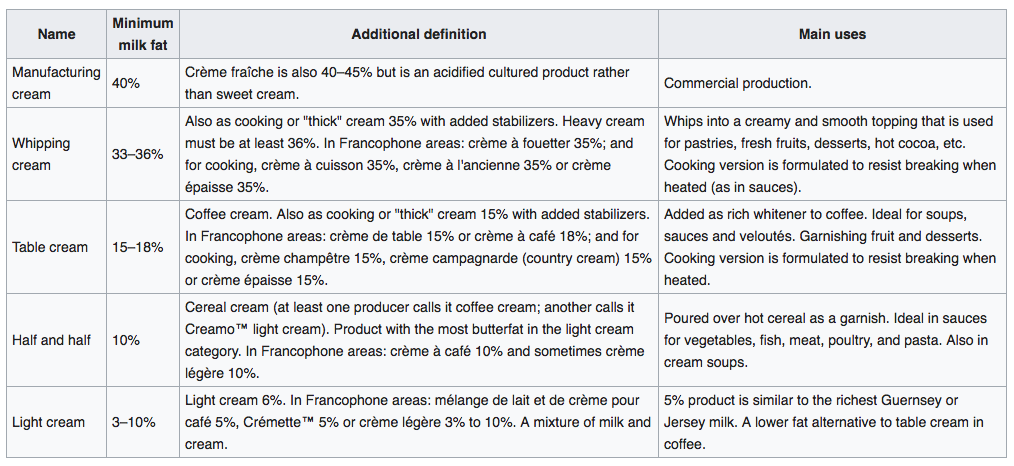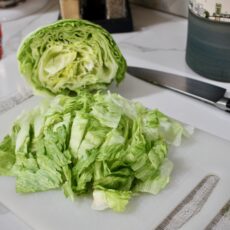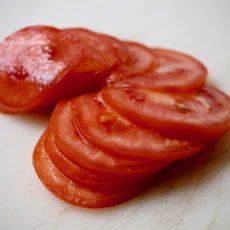As I said in a previous Cooking School installment (19-13: Cooking with Cheese), cheese is a really big part of Simply Delicious, and other dairy products factor in heavily as well. Today we see a lot more alternatives to traditional dairy (coconut milk, tofu, etc.) which is probably good given environmental and ethical concerns related to commercial dairy & meat production. However, it’s important to understand the original ingredient if we hope to find workable alternatives.

Not much more to add to what they’ve written here, but after the jump we’ll take a look at some common culinary dairy ingredients (check out 19-13: Cooking with Cheese for some recipes using specific types of cheeses) and I’ll link you to some recipes that use those ingredients.

Here’s some different recipes I’ve covered that use these ingredients. If I don’t have one for a particular ingredient yet, I’ll update it when I do.

Milk
Tons of recipes use milk, and it’s tough to narrow it down to a few. 3-14: Creamy Corn Chowder is notable for using milk instead of cream (probably to cut fat), and 5-22: Crêpes with Chicken suggests milk, but I tried it with both coconut milk and half-and-half, both with varying results. If I’m going to replace with coconut milk, it usually works well for something sweet (like a baked good or a sweet sauce) or something that coconut would be helpful.

Yogurt
Yogurt is fermented milk, and is a healthier replacement for sour cream, crème fraîche, cream cheese, mayonnaise, and more. It’s good for your guts (probiotics and all) and can be easier for those with lactose intolerance to digest. Recently, Greek-style (strained) yogurt has become popular, and is easily found in most major supermarkets. Simply Delicious uses yogurt in baked goods as well as main dishes.

Sour Cream
Sour cream is fermented cream typically used as a condiment, a baking ingredient, and a thickener for soups, dressings, and sauces. It has similar qualities to yogurt, but an aptly-named website (www.differencebetween.net) lists some differences between the two, reposted here for your convenience:
- Yogurt is fermented milk, while sour cream is made of fermented dairy cream.
- The bacteria introduced to make sour cream is different from the ones used in yogurt.
- Re-pasteurization is needed when making sour cream. It is not needed when making yogurt.
- Sour cream is often used as a condiment, while yogurt is often served as a snack food.
- In terms of discovery, or date of production, yogurt is much older than sour cream.
- Sour cream is very high in fat and not as nutritious as yogurt. Yogurt is high in nutritional content.
(Original source here)
Here’s some Simply Delicious recipes using sour cream, but I suppose you could substitute it for yogurt or crème fraîche in some of these (in fact, they suggest that in several of them).

Buttermilk
Buttermilk is essentially the milk left over from butter after churning and is used in sauces, dressings, baked goods, as well as marinade. The cultures left in the buttermilk make it somewhat tangy, as well as work similarly to yeast in baked goods and acid in cooking. In my restaurant days, we used buttermilk frequently for all of the reasons listed above.

Crème fraîche
Crème fraîche is sort of a cross between yogurt and sour cream. The term itself is French for “fresh cream”, and it is found frequently throughout French cuisine (something on which Simply Delicious and most American fine dining restaurants & culinary education programs focus heavily).
Sour cream or yogurt can be substituted for it in most recipes that call for it if it’s difficult or cumbersome to acquire, but crème fraîche can be found in specialty markets (and even some regular markets these days). I’ve yet to use it in this project (these recipes currently linked below used sour cream, although both are suggested as options), but I’ll update it if I bite the bullet and use the actual thing.
(Oh, and there was a South Park episode about it from 2010.)

Cream
Whipping cream plays a big part in a lot of Simply Delicious recipes, in no small part due to the profuse French influence. Cream isn’t exclusively French though–many other cuisines and cultures use it, including (but not limited to) Indian, Eastern European, & Middle Eastern.
If you hadn’t already clicked on it, I’ve saved you a trip to the above Wikipedia link and screen-shotted a breakdown of different types of cream, their fat content, & their uses (in the United States–follow the link for similar charts for different countries). There’s a few more culinary creams that you may see here and there (like manufacturing cream and clotted cream), but you probably won’t see them in Simply Delicious.

There’s a TON of Simply Delicious recipes that use cream, but here’s a few notable ones:

Butter
One of the most-used ingredients for this project is butter. Butter is a BIG part of cooking, and I use it frequently both in my home cooking as well as for my job. Butter isn’t exactly the BEST thing for you, health-wise, but it imparts major flavor into whatever you’re cooking. There are plenty of alternatives to butter (oils, animal fats, margarine) depending on what you’re doing with it, but sometimes there’s just no beating butter. I’ve covered butter in a previous Simply Delicious Cooking School entry, 19-16: Butter, Margarine, & Oils I.
Sure, there are lots of controversies about what’s the best fat for you, whether fat is good for you or not, the ethical issues of how these fats are obtained–and all of those are worth researching, discussing, and considering. But that’s not what THIS project is about, so I’m going to stick to the cooking.
It’s near impossible to just choose three butter-using Simply Delicious recipes, but here’s a few where I feel like the butter is not only necessary, but in some ways the star of the show.
Hopefully this provided some new insights about cheese & other dairy products–and if it didn’t, I hope that it was at least an entertaining read. 🐄



